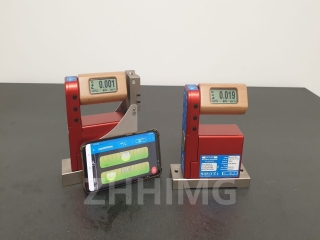1. Preparation before testing
Before the precision detection of granite precision components, we must first ensure the stability and suitability of the detection environment. The test environment should be controlled at constant temperature and humidity to reduce the impact of environmental factors on the test results. At the same time, the equipment and tools required for detection, such as vernier calipers, dial indicators, coordinate measuring machines, etc., need to be calibrated to ensure that their own accuracy meets the detection requirements.
2. Appearance inspection
Appearance inspection is the first step of detection, mainly checking the surface flatness, color uniformity, cracks and scratches of granite precision components. The overall quality of the component can be preliminarily judged by sight or with the help of auxiliary tools such as a microscope, which lays a foundation for subsequent testing.
3. Physical property test
Physical property testing is an important step in detecting the precision of granite components. The main test items include density, water absorption, thermal expansion coefficient, etc. These physical properties directly affect the stability and accuracy of the component. For example, granite with low water absorption and high thermal expansion coefficient can maintain good dimensional stability under different environmental conditions.
Fourth, geometric size measurement
Geometric dimension measurement is the key step to detect the precision of granite components. The key dimensions, shapes and position accuracy of components are accurately measured by using high-precision measuring equipment such as CMM. During the measurement process, it is necessary to strictly follow the measurement procedures to ensure the accuracy and reliability of the measurement results. At the same time, it is also necessary to carry out statistical analysis on the measurement data to evaluate whether the accuracy of the component meets the design requirements.
5. Functional performance test
For granite precision components for specific purposes, functional performance testing is also required. For example, granite components used in measuring instruments need to be tested for accuracy stability to assess how their accuracy changes in the course of long-term use. In addition, vibration tests, impact tests, etc. are also required to evaluate the stability and durability of the components under different working conditions.
6. Result analysis and judgment
According to the test results, the precision of granite precision components is analyzed and judged comprehensively. For components that do not meet the requirements, it is necessary to find out the reasons and take corresponding improvement measures. At the same time, it is also necessary to establish a complete test record and file to provide data support and reference for subsequent production and use.
Post time: Aug-01-2024

